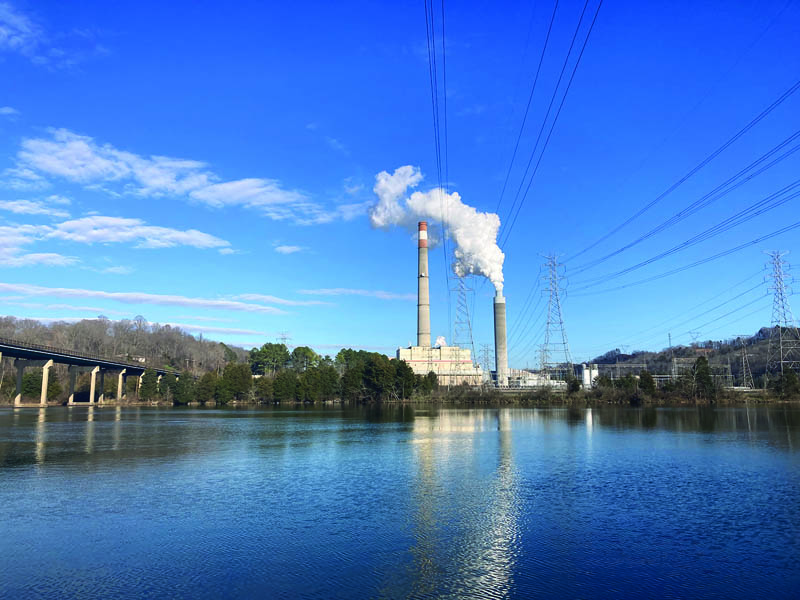New role for Bull Run?
TVA looks at repurposing options for former fossil plant

Bull Run Fossil Plant generated power by burning coal before its closure. (photo:Ben Pounds )
The plant, located in the Claxton community, closed last Dec. 1.
A news release from the utility stated the plant’s closure removed 765 megawatts of electricity from the grid.
TVA listed multiple ideas for the future of the site, including installing battery storage, pursuing economic development opportunities, adding new generation, or establishing a portion of the area for a green space for community use.
Any future use will depend on environmental reviews, community feedback and TVA’s final decision, the agency said.
TVA has stated that it’s looking to turn the generator into a synchronous condenser to keep the transmission grid stable.
Under this option, TVA would still demolish most of the other facilities on the site, such as scrubbers and coal handling areas.
TVA explained this development’s technical aspects in the news release.
The transmission system operates at a system frequency of 60 hertz, which is accomplished through matching generation output with energy consumption in real time. Spinning generation – rotating turbines that create power at TVA’s current generating facilities – is one of the ways to provide frequency stability as generation or consumption changes unexpectedly.
“Once we remove the spinning aspect by retiring a generating asset, we reduce the natural inertia maintaining the grid system frequency and decrease system support in that region,” Nate Schweighart, TVA’s general manager of transmission planning, said in the release. “And without careful planning, this could lead to instability.
“In addition, as we add renewable energy such as solar power, which doesn’t have a spinning element, we exacerbate the issue.”
Similar to a generator, a synchronous condenser spins. But unlike an operating plant’s generator, it doesn’t produce any real power. It simply operates to support the transmission grid. A crew would keep this synchronous condenser running.
“In Bull Run’s case, it’s located in a key strategic geographic location in the TVA service territory to provide grid stability in a largely populated area,” Schweighart said.
However, TVA’s board has yet to approve this idea, the utility stated.


